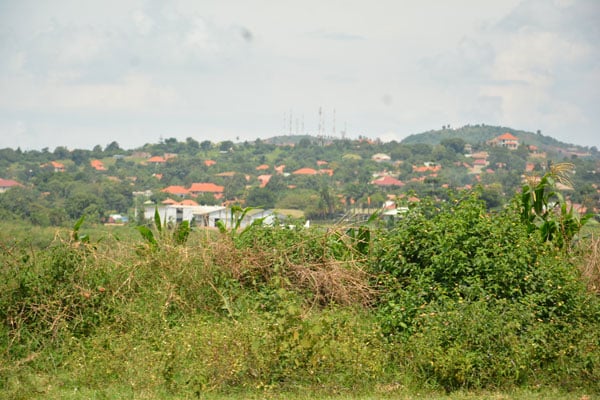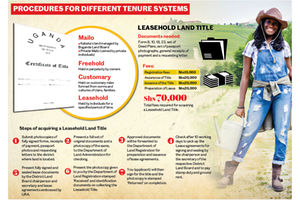
Writer: Cliff Kamuhanda. PHOTO/FILE
The purpose of this article is to incite debate and raise consciousness on a land information system that pioneered African introduction into formal land holding as we know it today. The Uganda government published a book in 1961 authored by HW West, the then assistant commissioner of lands and surveys titled The Mailo System in Buganda. It documented the history of land management, land holding and land rights in Uganda.
However, Uganda’s land information system today is dead. It probably bewilders those who manage it at the Ministry of Lands, Housing and Urban Development more than it does those who contribute towards it.
The mistakes that caused this mess have been adequately explained in an article published in Daily Monitor on April 28 titled ‘Auditing the land information system’. They vary from having grossly incompetent people handling highly technical and sensitive desks to imposing an international mapping system on a sovereign state.
To find answers to these challenges, we should not forget the following:
Uganda, like many other countries, has/had documented survey regulations. Introduced in 1961, they guided the execution of surveys with calibration standards of instruments, accuracy requirements of the surveys and the competence/class of the surveyor.
Our national mapping system was the Universal Transverse Mercator (UTM) Arc 1960, with the Clarke 1880 ellipsoid. There are control points under three orders of accuracy littered around the country; on hilltops (trigonometric points), on high physical features like the Namirembe Church Spire and the Kololo Summit mast, as concrete pillars, as residual traverse stations (RTS) and as Global Positioning System Points all on the ground respectively. A novel mapping system derived from the International Terrestrial Reference Frame (ITRF), and given the abbreviation UGRF, has been imposed on the surveying community. It does not have any known ground control points as the Arc 60 does.
The Institution of Surveyors of Uganda, the organisation that brings together all practising and non-practising surveyors (land surveyors, valuers and building economists) and revived in 1993, is a members-only club. Membership is subject to the scrutiny of an applicant’s academic and other relevant documents and payment of registration fees as well as annual payments for the different levels of membership (fellow, professional associate, graduate, technician and student).
It has grown from an exclusive club due to the low numbers in the past, to a corporate-like entity. The composition of the ISU is approximately 2,000 members. This is anywhere between 10 percent and 30 percent of the active surveyors practising in the country. ISU cannot effectively represent the aspirations of these surveyors.
A body seeking to represent professionals should know the professionals first. A blanket registration of all surveyors would go a long way in building the legitimacy of ISU. This is because, as the only legitimate body, a refusal to be freely registered would be interpreted as antagonism towards the profession. As the numbers grow, suitable standards based on empirical experience can then be imposed on the members.
The execution of the Computerised Land Information System failed because accountability died. In the era of hierarchy, it would have been impossible to overlook this sovereignty. In hindsight, this was easier implemented before the economy was liberalised so the hierarchy at the ministry was a given.
The Survey Training School or the Institute of Land Management provides an environment where old professionals can impart their experience to younger professionals and where graduates from academic institutions can attend periodic courses, and seminars to prepare them for the market, in much the same way the Law Development Centre does for lawyers.
Continuous professional development, which enables professionals to acquaint themselves with the inevitable realities of the changing environment, can also be continuously applied here.
Mr Cliff Kamuhanda is a land surveyor [email protected]



